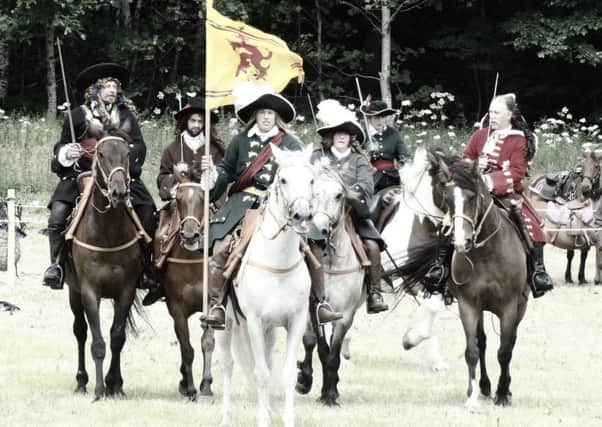Calls to search for buried men at Killiecrankie A9 site


Killiecrankie1689, a local opposition group, spoke out in light of a survey report on the land where the first act of the Jacobite rising was staged almost 330 years ago.
Transport Scotland wants to dual the stretch of the trunk road that already runs through the battlefield.
Advertisement
Hide AdA survey earlier found several potential pits on the site with concerns now raised by campaigners that the features could be burial pits.
One pit, which sits close to the main body of fighting associated with the battle, was assessed as being of high interest by surveyors.
The pit was found in an area where a number of buttons, a buckle and some impacted lead shot have already been discovered.
Henrietta Fergusson, spokeswoman at Killiecrankie1689, said: “Transport Scotland needs to find out categorically that there are no bodies where they want to put the road. If human remains are found, it is a game changer.
“Our argument is the battle site has not received the respect that it deserves. Some people may argue that the road was built on the site 40 years ago but that should not be used as an excuse. The legislation has improved since then.
“There is potential for these pits to be burial pits. Normally people would have been taken home for burial but more than 2,000 people died at Killiecrankie so there weren’t many people left to do this. It is quite possible the bodies were buried close to where they fell.”
Advertisement
Hide AdMs Fergusson added: “We accept that the road will have to be built through part of the battlefield but it is essential that Transport Scotland gets the right route and the right design. The studies at the moment do not go far enough.”
The report, which was commissioned for Transport Scotland and published last November, said no evaluation of the pits had been carried out.
Advertisement
Hide AdThe Jacobites claimed a victory at Killiecrankie but the losses were high with the leader, John Graham of Claverhouse, also known as Viscount “Bonnie” Dundee, among the dead.
Last month, Historic Environment Scotland (HES) called for further archaeological work to be carried out at the battlefield site before dualling of this stretch of road goes ahead.
Ann MacSween, head of casework at HES, said the impact of the new road was likely to be “significant” with concerns that the knock on effects on the battlefield could be even greater given the lack of information surrounding the proposals.
Transport Scotland has been contacted for a comment.